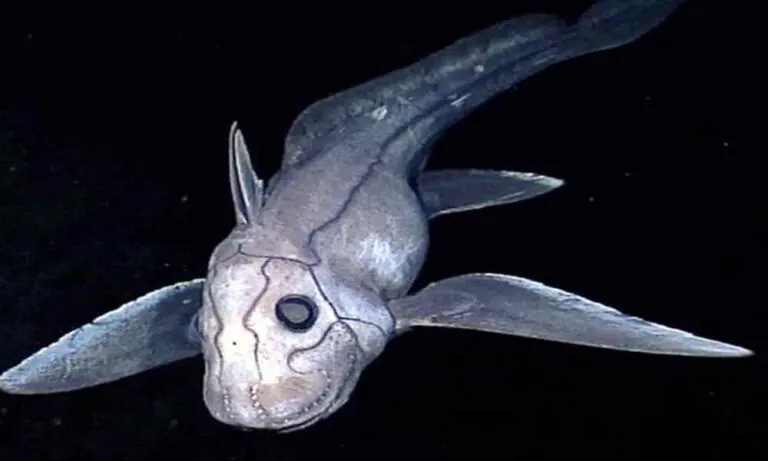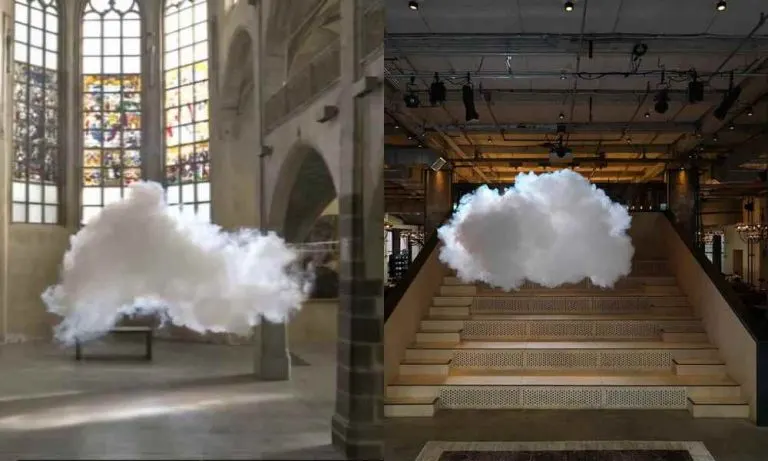Top 7 Artifacts in Ancient Pompeii | From Casts Of Bodies Frozen In Time To A Bread That Is 2000 Years Old!
The people of Pompeii, Rome would have thought that it was the dawn of just another day of their lives. Merchants would be getting ready for the day’s sales, while the slaves were occupied with their chores. The rich ladies would be deciding on what to wear on that day, while the fragrance of the bread baking in the oven spread through the houses. But the Mount Vesuvius, standing tall behind them, already had other ideas. This fateful day in 79 AD, nearly 2000 years back, marks the end of Pompeii. The massive eruption of Mount Vesuvius killed at least 1500 of their inhabitants were killed instantly. The eruption released poisonous gases into the air and lava engulfed the bodies of people and animals.
Some of the artifacts recovered from excavations give a glimpse of the ancient Pompeii. Here are the top 7 finds that will leave you surprised.
Casts of Bodies

While an estimated 1500 people were inside the city at the time of the tragedy, their bodies encased in the cooling lava, time disintegrated the organic components of the bodies. This left the human-shaped cavities amongst the compacted ash and debris. Italian archeologist Giuseppe Fiorelli got the brilliant idea to pour plaster of Paris into these ‘molds’, preserving casts of the inhabitants of Pompeii in their last moments in life.
One such cast is the Crouching man body cast found near the athletic grounds of Pompei When he died the man was wearing boots and a hooded cloak. He had covered his mouth with the edges of the cloak as the toxic fumes and volcanic ash overcame him.
Another such cast, famously known as ‘two maidens embracing’, consists of two figures touching each other. With the most recent findings, some archeologists theorize that these could be of two males.

Double Headed Snake Bracelet

The house of the bracelet was a beautiful high-status house found near the city’s western city walls. Among many treasures in the house, the most significant was an intricate bracelet. The bracelet was solid gold, bearing a double-headed snake, and weighed 1.33lbs. This was found in the arm of one of the four bodies, those of the last inhabitants of the house. The bodies were of a man, a woman, and two children. The chamber where their bodies were discovered was scattered with about 200 gold coins, suggesting that the family was of wealth. The bracelet was in the hand of the young wife, forever preserved amongst the debris.
Bread

The bread was a staple diet in ancient Rome. While the people of a lower status ate flatbread, the rich enjoyed the more extravagant bread. These were made to rise with yeast and were baked with a specialized seal to symbolize the bakery. A batch of bread called ‘Panis quadratus’ was still baking in the oven at a bakery in Pompeii when the eruption of lava engulfed it. They were carbonized, and remain some of the few well-preserved organic artifacts found amongst the ruins.
They give an idea about the diet of the Romans at the time. Remnants of exotic food from all around the world, such as shellfish, grains, and meats which include giraffe meat were among other discoveries.
Artwork
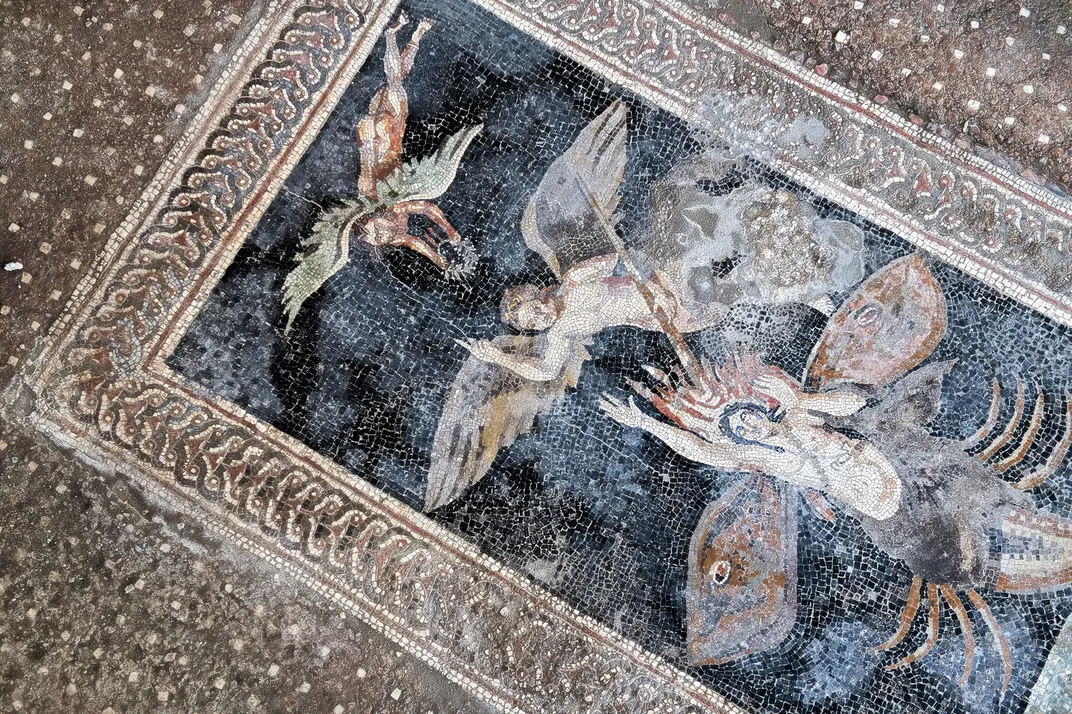
Rome was a hub for all sorts of art from the ancient days. Being a city that received visitors from all around the world, Pompeii had a variety of art, including statues, paintings, and frescos. Some of these images were quite brazen and showed the inhabitant’s comfort with themes related to sex and nudity.
This floor mosaic of Orion turning into a constellation discovered recently hints at the influence of Egypt.

This fresco of the Wedding of Alexander the Great and Barzine (Stateira) was discovered from the lower level triclinium of the House of the Golden Bracelet.
Graffiti
Sometimes the acts of vandalism can become art and can portray human emotions. Thousands of graffiti, discovered in the buried city of Pompeii transcends time to show them to us in a more human light.
Amongst the rediscovered graffiti are many ‘was here’ graffiti, a traveler wanting to leave his name behind.
One example is ‘Aufidius was here. Goodbye’ written in the house of Cosmus and Epidia
There were also many bawdy graffitis of a sexual nature.
“Restituta, take off your tunic, please, and show us your hairy privates”, states a graffiti in Tavern of Verecundus
There were also declarations of love “Secundus says hello to his Prima, wherever she is. I ask, my mistress, that you love me”

“The finance officer of the emperor Nero says this food is poison.” (Comments about the food were also present)
A Glimpse into the middle-class lives
Most of the initial discoveries; the art, the jewelry, the architecture probed at the life of the rich. This is partly because wealthier houses were built out of non-perishable materials. Those in lower socio-economic statuses usually lived in homes made of more perishable construction, which were destroyed from the eruption and time. Yet, a recent excavation site in a different area of the city gives us a picture of the struggles of the ancient middle class. Plain earthenware floors, a wooden dishware closet, a functional bunk bed, and sparsely furnished rooms all bear evidence of the lives of the common man
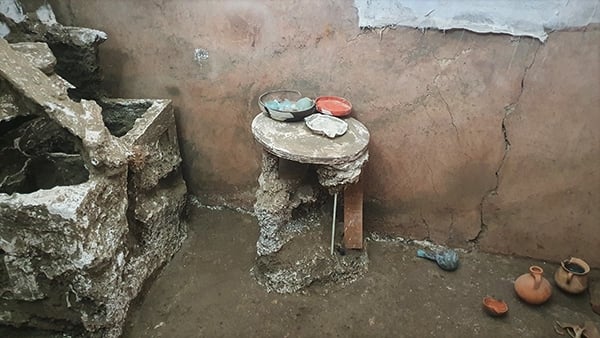
Box of Charms
A large trove discovered in a corner of the House of Gardens, Pompeii is another interesting find. The box had turned to dust a long time ago, but the hinges were intact. The content varied from seashells to small phallic charms to figurines. The exact purpose of these objects is up for debate. However, many archeologists agree that these were intended for mystical purposes.
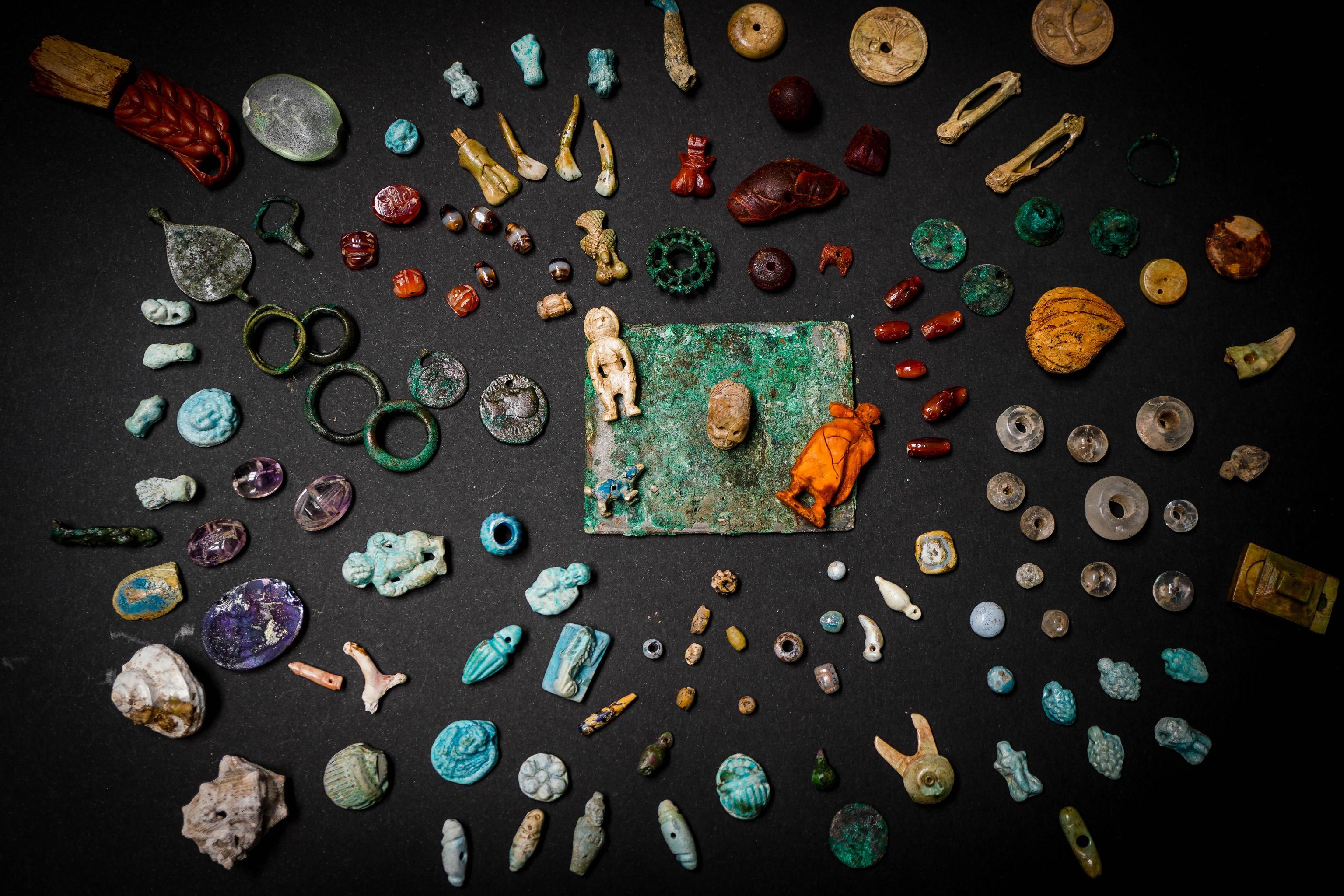
All these artifacts, preserved for millennia provide us with a time machine in to ancient Rome. Yet, as Goethe once said, the fact that so much happiness had to be erased to preserve such treasure, remains a conundrum.
Also read,



